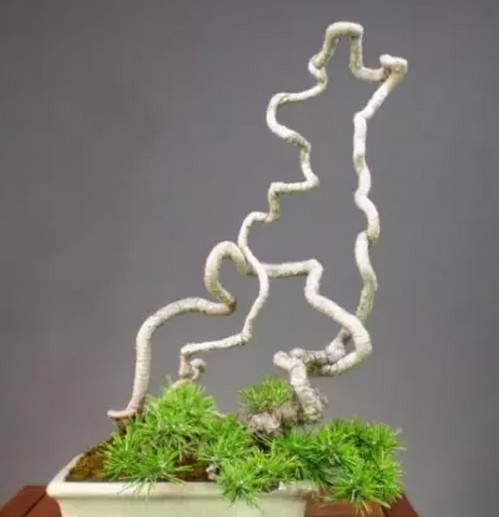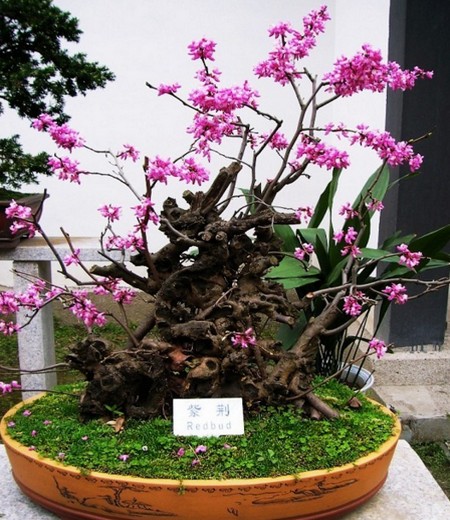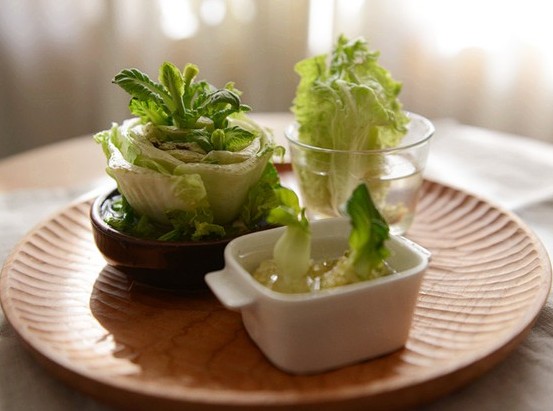The method of making bonsai with root-lifting tree stump
The root is an important part of the stump bonsai. The distribution and shape of the root directly affect the ornamental value of the bonsai.

Through planned cultivation, the root of the stump turns the basin, changes the soil, changes the basin year by year, arranges the root, grasps the extension direction of the root, and then continues to plant, gradually exposing the root to the surface of the soil. The common methods of root lifting are as follows:
The main results are as follows: (1) the method of planting Kuitu in deep pot. With a deep and wide-shaped cultivation basin, the basin is filled with loose, fertile and well-drained soil. The soil in the basin can be molded into the basin surface, and the tree stump can be planted in the soil higher than the basin surface. After several years of cultivation, the root system grew thick and elongated, the basin soil gradually decreased, and the root was gradually exposed.
(2) shallow basin sleeve filling method. With a shallow, wide-shaped culture basin, the basin is filled with soil suitable for cultivating trees, and the basin is covered with a cylinder that is 1 / 3 smaller than the mouth of the basin. The cylinder can be surrounded by multiple layers of plastic film, or it can be surrounded by linoleum and thin wood, and then loose and fertile soil is added to the cylinder to plant the stump in the sleeve. After several years of cultivation, the root extends to the bottom of the basin and thickens properly. When the stump can be supported, the sleeve can be removed and the root can be exposed. A tree species, such as a banyan, that tends to grow aerial roots. Bacon is often used in this way.
(3) stump root cutting culture. Use stumps with exposed roots that are excavated in the mountains or purchased in the market to cut off their main roots and lateral roots (the cross section should be downward). Through cultivation, fine roots grow out of the cut, so that the sawing scars are not visible, the roots are beautiful, and the time of bacon can be shortened.
(4) root-holding method. This method is mostly used for Nanyang fir bonsai. When the seedlings of Cunninghamia lanceolata are planted in a small basin, their roots naturally grow in circles along the edge of the basin. When the seedlings grow vigorously, the roots are wrapped into fists, and then the roots are planted and formed.
(5) stone-attached cultivation. After the stump has been cultivated for 2 ^-3 years, the sleeve is gradually removed, forming a bonsai with natural stone and roots.
There are mainly three kinds of root extraction methods: deep pot high planting soil root extraction method, deep pot flat planting root extraction method and cylinder sand peeling root method.
After the stump is planted in the deep pot, it will take 2-3 years, combined with turning the basin, to lift the root up year by year, so that the root can be exposed. Deep pot flat planting flushing root lifting method in each watering, raise the kettle, make the water rinse to the root, gradually wash away the soil of the root and make the root exposed. Combined with turning the basin to improve the cultivation position of the root, the exposed part of the root is gradually increased, and its shape is gradually perfect. The cylinder Shapeigen method is to remove the stump from the cylinder and plant it in a shallow pot after the root has grown. When planting, it is properly renovated and shaped so that the root is exposed on the basin surface.
Create an environment that allows the roots to be molded, such as a high tube environment, where the soil in the tube needs to be breathable, you can choose rough sand as soil, and pay attention to the use of large particles of perlite, vermiculite and small particles of orchid stone, which are all very breathable.
Time: 2019-05-26 Click:
- Prev

Production method of Bauhinia bonsai
Bauhinia its spring purplish red flowers bloom in the first leaves, shaped like butterflies, when in full bloom, close to the branches, the tree is full of flowers, not only on the branches, but also the old trunk, even the trunk close to the root can also bloom. After the defoliation in winter, the branches show their muscles and bones, and the feeling of vigorous Qiu qu is suddenly in front of us. Use it to make bonsai.
- Next

Various methods of making bonsai for vegetables
Potted vegetables have strong ornamental and practical value, and can be used as miniature bonsai to decorate the room, courtyard and balcony. Potted vegetables are easy to get materials, easy to grow and easy to live. They are generally planted with seeds, tubers, tubers, fresh stems, etc., which are not limited by regions and seasons, and can be often planted.
Related
- Fuxing push coffee new agricultural production and marketing class: lack of small-scale processing plants
- Jujube rice field leisure farm deep ploughing Yilan for five years to create a space for organic food and play
- Nongyu Farm-A trial of organic papaya for brave women with advanced technology
- Four points for attention in the prevention and control of diseases and insect pests of edible fungi
- How to add nutrient solution to Edible Fungi
- Is there any good way to control edible fungus mites?
- Open Inoculation Technology of Edible Fungi
- Is there any clever way to use fertilizer for edible fungus in winter?
- What agents are used to kill the pathogens of edible fungi in the mushroom shed?
- Rapid drying of Edible Fungi

